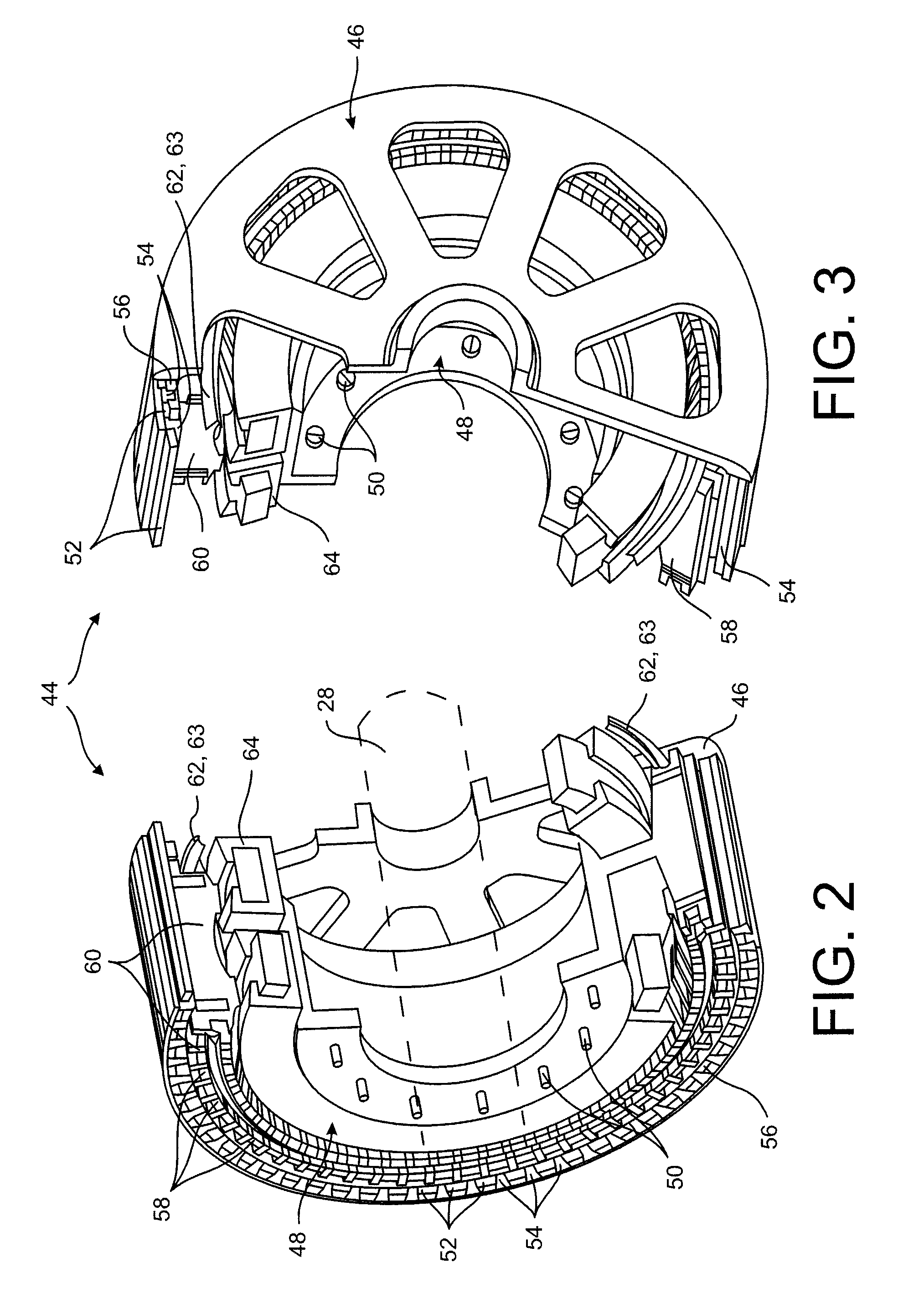Brake for Electric Motor
a technology for electric motors and brakes, applied in mechanical devices, mechanical energy handling, transportation and packaging, etc., can solve the problems of noisy clutch-type brakes, insufficient stopping power for emergency stops, and narrow range of braking torque that a specific clutch-type brake can variably apply, so as to reduce magnetic flux
- Summary
- Abstract
- Description
- Claims
- Application Information
AI Technical Summary
Benefits of technology
Problems solved by technology
Method used
Image
Examples
Embodiment Construction
[0040]Referring now to FIG. 1, a schematic diagram of an exemplary elevator system 10 is provided. It is to be understood that the version of the elevator system 10 shown in FIG. 1 is for illustrative purposes only and to present background for some of the various components of a general elevator system. Other components of an elevator system unnecessary for an understanding of the present disclosure are not described.
[0041]As shown in FIG. 1, the elevator system 10 may reside fully or partially in a hoistway 12 that is vertically disposed within a building 14. The hoistway 12 may generally be a hollow shaft provided within a central portion of the building 14 with multiple hoistways being provided if the building is of sufficient size and includes multiple elevators. Extending substantially the length of the hoistway 12 may be rails 16, 18 along which an elevator cab 20 as well as counterweights 22 may be slidably mounted. While not depicted in detail in FIG. 1, one of ordinary ski...
PUM
 Login to View More
Login to View More Abstract
Description
Claims
Application Information
 Login to View More
Login to View More - R&D
- Intellectual Property
- Life Sciences
- Materials
- Tech Scout
- Unparalleled Data Quality
- Higher Quality Content
- 60% Fewer Hallucinations
Browse by: Latest US Patents, China's latest patents, Technical Efficacy Thesaurus, Application Domain, Technology Topic, Popular Technical Reports.
© 2025 PatSnap. All rights reserved.Legal|Privacy policy|Modern Slavery Act Transparency Statement|Sitemap|About US| Contact US: help@patsnap.com



